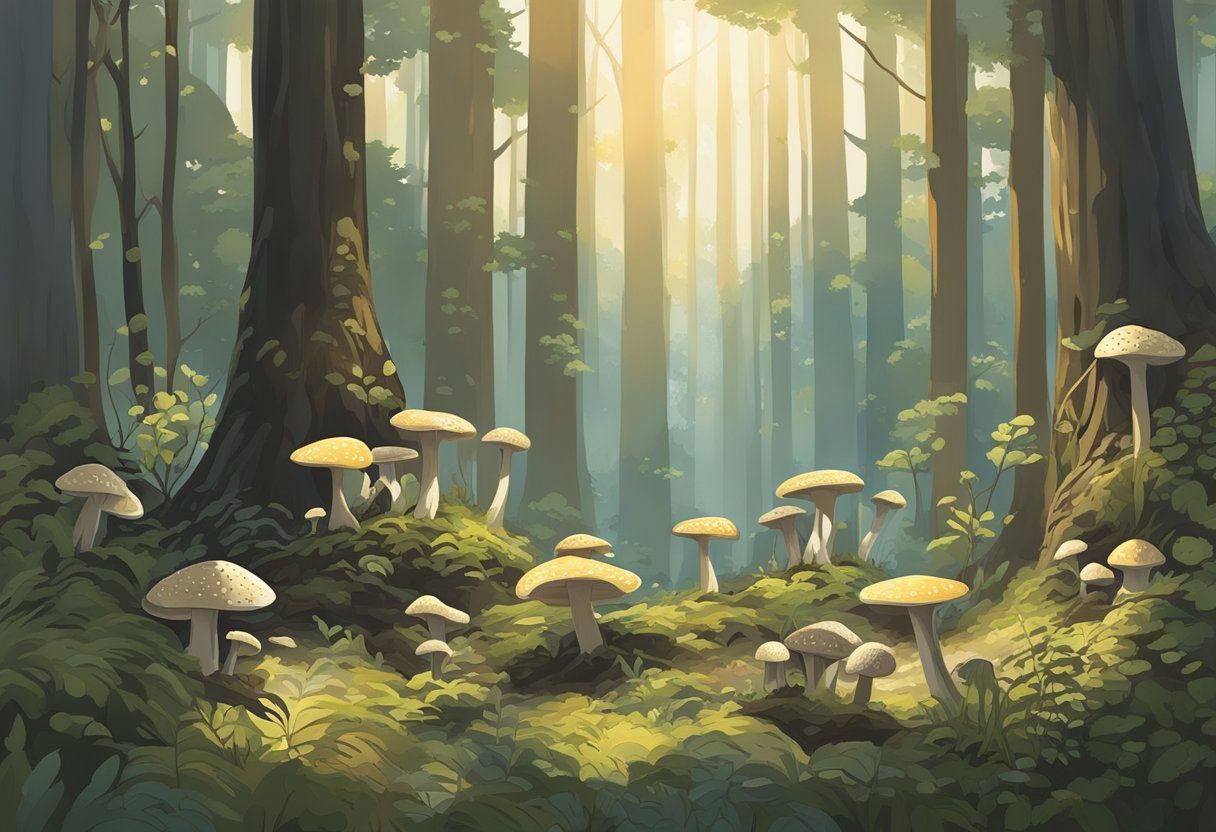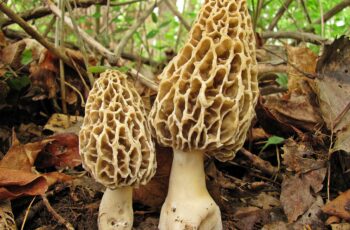Morel mushrooms are a culinary delicacy, widely sought after by chefs and gourmands for their unique flavor profile that lends a gourmet touch to dishes. Unlike many common varieties of mushrooms easily found on grocery store shelves, morels require specific conditions to flourish, making them less accessible. These distinctive fungi favor temperate climates and are most commonly found in forested areas, thriving in the aftermath of environmental disturbances.

Cultivating morels at home is a process that can be both challenging and rewarding. The key to successfully growing morels lies in replicating their natural growing conditions as closely as possible. This involves understanding their complex lifecycle and the symbiotic relationships they form with surrounding plant life, particularly trees. For those interested in taking on this undertaking, careful preparation and patience are paramount, as morels can be quite finicky about their growing conditions.
Key Takeaways
- Morels are a sought-after mushroom that require specific conditions to grow.
- Understanding morel lifecycles and symbiotic relationships is crucial for successful cultivation.
- Patience and careful preparation are essential for growing morels at home.
Understanding the Morel Lifecycle
To successfully cultivate morels, you must intimately understand their unique lifecycle and the ecological niches they occupy. This section will guide you through the science of morel biology, how to create prime growing conditions, and how to initiate the cultivation process with spore preparation.
Morel Biology and Ecology
Morchella, commonly known as morels, are highly sought-after fungi with a distinctive honeycombed appearance. Unlike many mushrooms, morels have a complex symbiotic relationship with deciduous trees, such as elm and ash. Mycelium, the vegetative part of the fungus, intricately intertwines with tree roots, thriving in rich, loamy soil packed with nutrients. Morels are most commonly found in the wild during spring, and their ecology is as fascinating as it is essential to fruitful cultivation.
Optimal Growing Conditions
To grow morels, it’s crucial to mimic their natural fruiting conditions. Morels demand a temperature range of 60 to 70 degrees Fahrenheit and high humidity levels, although they do not require much light. Your commitment to balancing soil pH, moisture levels, and nutrient content will create an inviting environment for morels to produce fruit. Loam or loamy soil rich in organic matter provides the best substrate for outdoor cultivation, while an indoors setup allows for greater control over the morel’s habitat.
Gathering and Preparing Spores
The journey to cultivate morel mushrooms begins with the collection of spores. You can create a spore slurry by mixing mature morel spores with non-chlorinated water, a bit of molasses, and grain to feed the spores. This mixture is then spread over a suitable substrate—be it a wood chip, sand, and compost mixture, or even added directly to soil enhanced with wood ash. As morel mycelium begins to colonize the substrate, it requires a period of dormancy—induced by winter-like conditions—before it’s ready to fruit.
Practical Guide to Cultivation
Cultivating morel mushrooms can be a complex endeavor, but understanding the key principles of indoor and outdoor cultivation, as well as overcoming common challenges, can yield a successful harvest of this delicious and nutritious fungi.
Indoor Cultivation Techniques
To cultivate morels indoors, you’ll need to pay close attention to creating a controlled environment. Begin with obtaining morel spawn and preparing a substrate mixture of peat moss, sawdust, and gypsum. The substrate should be sterilized to prevent contamination, a process that can be achieved through steaming or chemical treatments. Once the substrate is ready, it’s time to introduce the spawn. Maintain temperature control around 70°F and ensure high humidity levels. Morels require a sterile technique throughout the process to promote the formation of primordia and eventually sclerotia, which are precursors to mushroom growth.
Outdoor Cultivation Strategies
Outdoor cultivation mimics the natural conditions morels favor. Start by choosing an area near elm or apple trees, as the association with these trees can stimulate growth. For creating a morel bed, mix the spores with water and spread them over the desired area, which should contain plenty of organic matter like compost or wood chips. Cover the bed with wet cheesecloth to maintain moisture and protect from direct sunlight. Soil pH should be maintained around neutral, and it’s crucial to water regularly without over-saturating the area.
Challenges and Solutions
Morels are known for being particularly elusive to cultivate due to their specific growing conditions. The success rate might be low at first attempt, but common challenges, such as contamination or incorrect moisture levels, can be countered with careful monitoring and adjustment. If you face a challenge in temperature maintenance, consider using temperature control technologies or adjusting the watering schedule to stabilize soil temperature.
Harvesting and Utilization
Once your morels have matured, it’s time to harvest. Gently twist and pull the mushrooms from the soil or substrate. After harvesting, the morels are ready for use in a variety of delicious recipes. They are highly regarded for their health benefits and nutritional value, including high levels of Vitamin D and antioxidants. Note: Always adhere to the FDA disclaimer regarding the identification of edible mushrooms before consumption.
Compliance and Safety
When cultivating morels, either as a hobbyist or commercially, it is important to comply with any relevant regulations. Medicinal mushrooms come with additional considerations and must always be approached with an understanding of their properties. If any patents, such as those related to morel cultivation methods, might impact your activities, ensure to review and follow these requirements.
Through careful attention to these guidelines and practices, your venture into cultivating morel mushrooms can be a rewarding journey.
Frequently Asked Questions
In this section, we aim to address the most common inquiries regarding the cultivation of Morel mushrooms, from starting your own mushroom garden to addressing the intricacies of mushroom farming.
How can I start cultivating Morel mushrooms at home?
To begin cultivating Morel mushrooms at home, you must create an environment similar to their natural habitat. This involves sourcing high-quality spores or a grow kit and planting them in a shady area with moist soil that is rich in organic matter.
What is the optimal environment for growing Morel mushrooms?
The optimal environment for growing Morel mushrooms includes a soil rich in decaying wood material, adequate moisture, and specific light conditions. Maintaining a consistent temperature that mimics springtime conditions can also be beneficial for Morel growth.
What methods are effective in spreading Morel spores?
Spreading Morel spores is most effectively done using a spore slurry method, which involves mixing spores with water and molasses to encourage mycelium growth when applied to the targeted soil.
What are the best practices for using a Morel mushroom grow kit?
When using a Morel mushroom grow kit, ensure that you follow the provided instructions closely. It is crucial to maintain the appropriate moisture levels and provide the kit with a cooler temperature during the incubation period before exposing the Morel mycelium to warmer conditions to stimulate mushroom formation.
Can Morel mushrooms be cultivated indoors?
Cultivating Morel mushrooms indoors is possible, but it requires meticulous control of temperature, humidity, and light to replicate outdoor conditions that the Morels would naturally thrive in.
What are the challenges in farming Morel mushrooms commercially?
Commercial Morel mushroom cultivation faces challenges such as creating the precise environment required for Morel fruiting, dealing with contamination risks, and the difficulty in mimicking the natural symbiotic relationships that occur in the wild.


